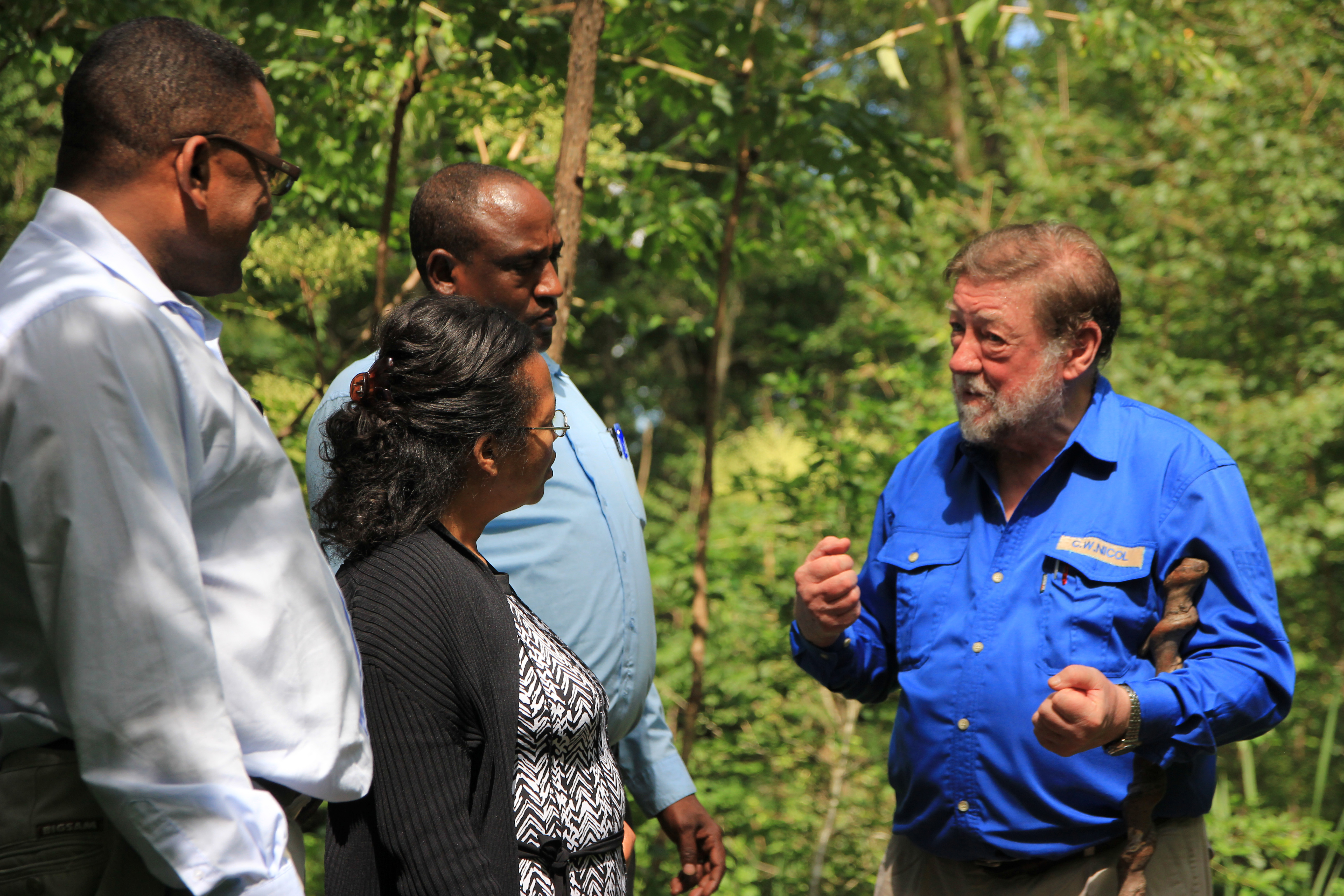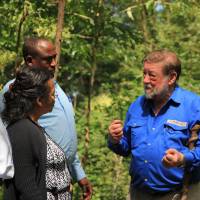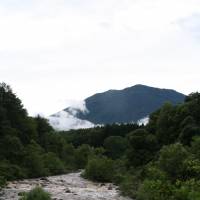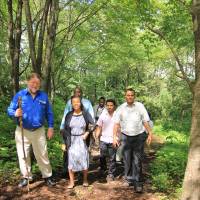As I sit in my study here in Kurohime in the hills of northern Nagano Prefecture, through the window I can see 2,053-meter Mount Kurohime, a dormant volcano that's forested to the top.
Legend in these parts has it that the mountain is the home of a beautiful princess who consented to fly off with a black dragon to save her people from the earthquakes and floods the angry beast was inflicting on them.
So the story goes, the dragon — which was a shape-shifter — had appeared before the princess and her father in the form of a handsome young man, asking for her hand in marriage.
As a test before he'd consent to the request, though, the father set the young man various really tough tasks, including a barefoot race. However, the father hid swords and other sharp objects along the trail, which injured the runner.
Yet even though the dragon-man completed all the tasks set him, the father reneged on his promise and refused to give away his daughter.
On hearing this, the enraged shape-shifter reverted to its true form as a dragon and began to wreak havoc on the land and the people. And so it was that — in order to save the populace — the princess pleaded with the dragon to take her.
The dragon then swooped down and carried her off to live in the mountain that now bears her name — Kurohime, meaning "Black Princess."
People have been living around here, so I'm told, for about 30,000 years, during which time the volcanoes would have been active, and my guess is that the legend is somehow linked to times of terrible eruptions in the distant past.
Another theory for the name is that people in this area started making metal weapons that gave them an edge (no pun intended) over their rivals. Kuro, so it is said, was a name for "iron" — while hime, which means "princess," could also mean secret. As the area has a lot of iron-rich red soil, and Mount Kurohime frequently attracts spectacular displays of lightning, even in winter when its snowing, perhaps that's really not so far-fetched.
Meanwhile, from my study window I can also see and hear the beautiful Torii River (torii means "secret gateway"), which joins the Chikuma River, which in turn joins the Shinano River that debouches into the Sea of Japan at Niigata. Flowing from Nagano Prefecture and through Niigata Prefecture, the Shinano River and its tributaries constitute the largest and longest river system in Japan — at 367 km.
Lately, we've been having lots of torrential rain, and the usually gentle Torii River is now a raging monster. For a few days, we've had a group of children with us in our Afan Trust woods, and normally we would bring them to a spot just outside my study to have fun in the river. Right now, though, the river is too dangerous.
Elsewhere, however, a whole other kind of storm is now looming — and as a great fan of dragons (having been born in Wales), I intend to be involved.
The district of Kurohime is a major part of the Joshinetsu Kogen Kokuritsu Kogen (Joshinetsu Highland National Park), which straddles Nagano, Niigata and Gunma prefectures and is divided into two areas.
I live in the southern Niigata and northern Nagano Area, which includes the mountains of Myoko, Kurohime, Iizuna and Togakushi as well as Lake Nojiri. The other section is the east Nagano Area, which includes the mountains of Tanigawa, Kusatsu Shirane and Asama.
However, the government's Environmental Agency has now decided that the two park areas are separate and different — and that from now on they should be two separate parks. Nobody has objected to that, but — taking no notice of local feelings — the bureaucrats have also decided to rename our part the Myoko Togakushi National Park.
So, people from Iizuna and Nojiri Lake, and us, the Kurohime folk, have been deprived of our national park status without ever having been asked.
I have just done a little news conference with our mayor, Matsuki Shigehiro, who has suggested that the name of this northern park should be Shinetsu Kogen Kokuritsu Koen (Shinetsu Highland National Park) — which would cover everything.
The name decided for the eastern Nagano park is Joshinetsu Kogen Kokuritsu Koen (Joshinetsu Highland National Park) — and nobody is objecting.
However, to name something as important as a national park after just two areas is misleading and unfair, and all the local communities and organizations — apart from Myoko and Togakushi — are strongly protesting. As the chairman of a national woodland trust, so am I.
At this point, please allow me to now switch this Notebook's topic to a national park that I helped to establish in 1969: the Simien Mountain National Park in Ethiopia.
I have previously written here about how, in August 2013, a delegation of officials from Ethiopia came to Kurohime to talk to me about the current state of the park, which in 1978 became one of the first UNESCO World Heritage sites. Sadly, though, due to civil war and other problems, it was added to the List of World Heritage in Danger in 1996.
Now, unless something drastic is done pretty quickly, it could very well lose its World Heritage status altogether. That would be a tragedy.
Again, in this column, I wrote about revisiting the Simien in January this year. After that visit I submitted a list of ideas and proposals how to help the park and its people. Last week, the Ethiopian government sent another delegation to meet me in Kurohime to discuss those suggestions and ask me to help.
The delegation was headed by state Minister of Culture and Tourism Tadelech Dalacho and Director-General Dawid Mumi Ali of the Ethiopian Wildlife Conservation Authority — who were accompanied by the park's chief warden, Endalew Maru Biadglegn; the bureau head of the Department of Culture, Tourism and Parks, Moges Alebel Dessie; and Gorfu Fanuel Kebede, a technical adviser. Also in the visiting party were two professors from the University of Gondar in Ethiopia, along with officials and experts from the Japan International Cooperation Agency and the University of Hokkaido. Forgive me for blowing my own trumpet, but Ethiopia has officially honored me with the title of goodwill ambassador to the Simien Mountain National Park.
I have no doubt that ties between our two mountain areas — and many other mountain areas — will widen, and I hope that all of us, with our unique and spectacular scenery, wildlife, legends, local culture and food, will not be passed over and ignored by ignorant officials.
Government officials responsible for such important things as naming areas without consulting locals — and who then move on and never take responsibility — should realize that this could cause bad feelings that might last a long, long time. And we do not want that.
Kurohime is the name of our mountain (and our train station), and as the mountain goddess, the Black Princess, is reputed to be a very jealous lady, I shall never forget to respect and use her name.





















With your current subscription plan you can comment on stories. However, before writing your first comment, please create a display name in the Profile section of your subscriber account page.